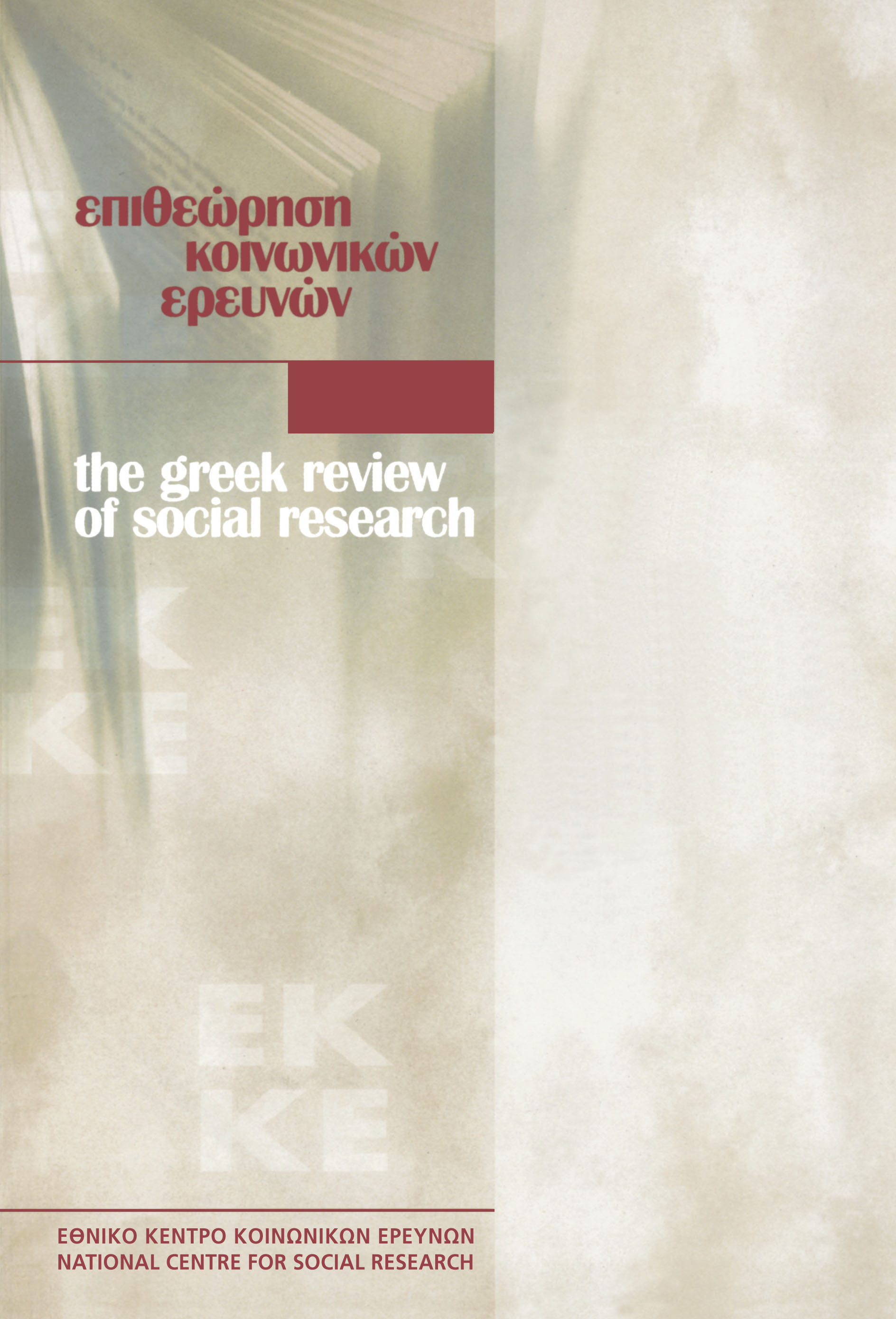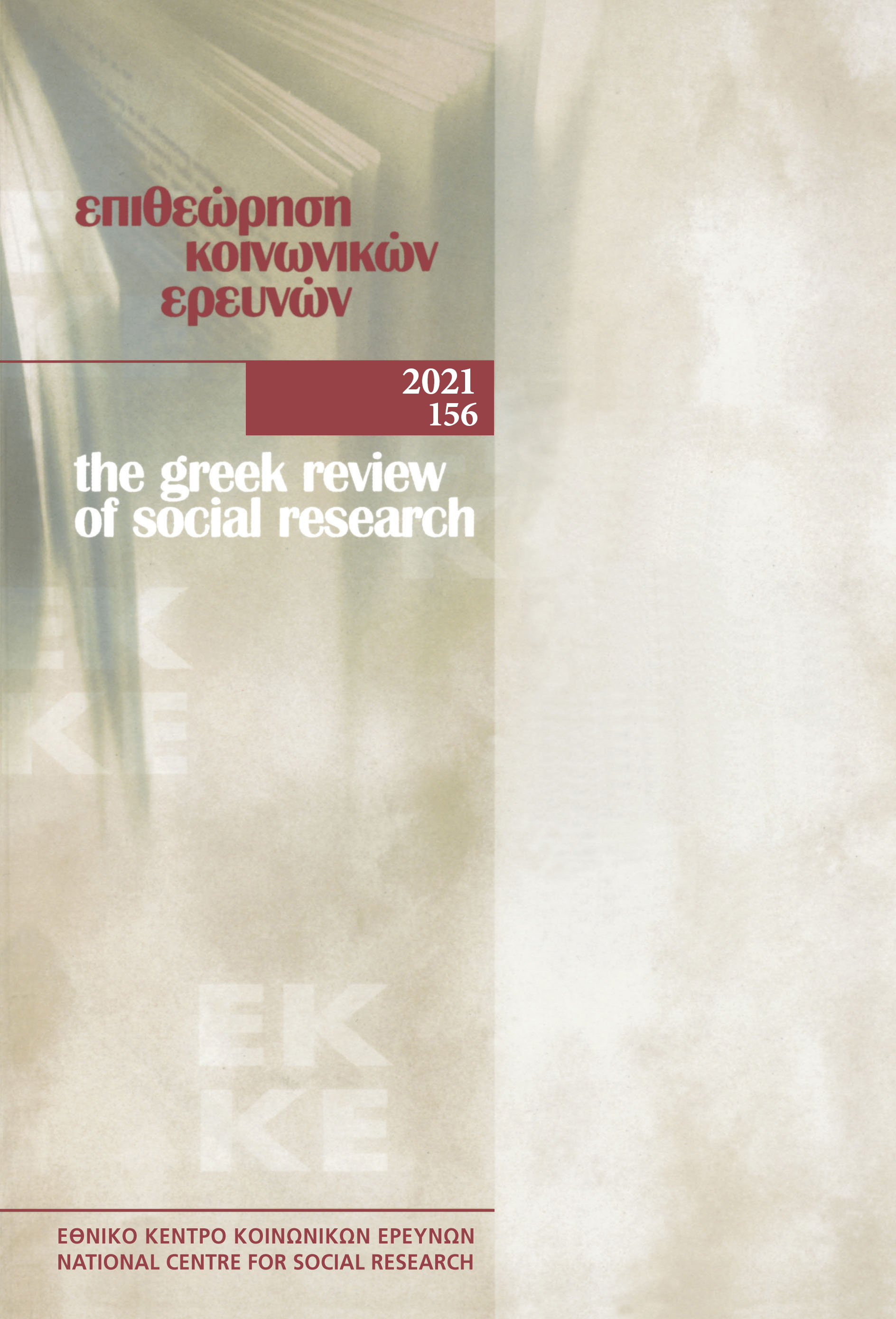Κοινωνικοοικονομικές και περιβαλλοντικές ανισότητες μεταξύ των περιφερειών των ευρωπαϊκών κρατών την περίοδο της οικονομικής κρίσης: Μια εμπειρική συγκριτική ανάλυση

Περίληψη
Η παρούσα μελέτη αποσκοπεί στην εμπειρική διερεύνηση των ενδοκρατικών κοινωνικών και περιβαλλοντικών ανισοτήτων στα κράτη-μέλη της ΕΕ την περίοδο της οικονομικής κρίσης. Προς το σκοπό αυτόν, επιχειρείται η συγκριτική ανάλυση των διαπεριφερειακών αποκλίσεων σε 19 κράτη-μέλη της ΕΕ το 2013, εστιάζοντας στην έκθεση του πληθυσμού στην ατμοσφαιρική ρύπανση και στο κοινωνικοοικονομικό του επίπεδο. Επιπλέον, πραγματοποιείται διαστρωματική-διαχρονική ανάλυση στις περιφέρειες επτά ευρωπαϊκών κρατών την περίοδο 2009-2013, προκειμένου να διερευνηθεί η συσχέτιση της έκθεσης στην ατμοσφαιρική ρύπανση με το κοινωνικοοικονομικό επίπεδο του περιφερειακού πληθυσμού. Από την ανάλυση προκύπτουν οι σημαντικές κοινωνικές και περιβαλλοντικές ανισότητες στην πλειονότητα των ευρωπαϊκών κρατών. Αν και η κατανομή της περιβαλλοντικής ποιότητας μεταξύ των περιφερειών φαίνεται να είναι κοινωνικά «δίκαιη», σε ορισμένα ευρωπαϊκά κράτη ήδη κοινωνικά ευάλωτες ομάδες εκτίθενται σε δυσανάλογα υψηλά επίπεδα ατμοσφαιρικής ρύπανσης, γεγονός που τις καθιστά πιο ευάλωτες στις επιπτώσεις των κλιματικών μεταβολών, ιδίως την περίοδο της οικονομικής κρίσης.
Λεπτομέρειες άρθρου
- Πώς να δημιουργήσετε Αναφορές
-
Avrami, L. (2019). Κοινωνικοοικονομικές και περιβαλλοντικές ανισότητες μεταξύ των περιφερειών των ευρωπαϊκών κρατών την περίοδο της οικονομικής κρίσης: Μια εμπειρική συγκριτική ανάλυση. Επιθεώρηση Κοινωνικών Ερευνών, 152, 3–44. https://doi.org/10.12681/grsr.21366
- Τεύχος
- 2019: 152
- Ενότητα
- Άρθρα

Αυτή η εργασία είναι αδειοδοτημένη υπό το CC Αναφορά Δημιουργού – Μη Εμπορική Χρήση 4.0.
Οι συγγραφείς των άρθρων που δημοσιεύονται στην Επιθεώρηση Κοινωνικών Ερευνών διατηρούν τα δικαιώματα πνευματικής ιδιοκτησίας επί των άρθρων τους, δίνοντας στο περιοδικό το δικαίωμα της πρώτης δημοσίευσης. Άρθρα που δημοσιεύονται στην Επιθεώρηση Κοινωνικών Ερευνών διατίθενται με άδεια Creative Commons 4.0 και σύμφωνα με την άδεια μπορούν να χρησιμοποιούνται ελεύθερα, με αναφορά στο/στη συγγραφέα και στην πρώτη δημοσίευση για μη κερδοσκοπικούς σκοπούς.
Το Εθνικό Κέντρο Κοινωνικών Ερευνών διατηρεί το δικαίωμα να δημοσιεύει, να αναπαραγάγει, να παρουσιάζει στο κοινό, να διανέμει και χρησιμοποιεί άρθρα που δημοσιεύονται στην Επιθεώρηση Κοινωνικών Ερευνών σε οποιοδήποτε μέσο και μορφή είτε μεμονωμένα είτε ως μέρη συλλογικών έργων, για όλο τον χρόνο διάρκειας προστασίας της πνευματικής ιδιοκτησίας και για όλες τις χώρες του κόσμου. Αυτό περιλαμβάνει ενδεικτικά και όχι αποκλειστικά το δικαίωμα δημοσίευσης των άρθρων σε τεύχη της Επιθεώρησης Κοινωνικών Ερευνών, αναπαραγωγής και διανομής μεμονωμένων αντιγράφων των άρθρων, αναπαραγωγής ολόκληρων των άρθρων σε άλλη έκδοση του Εθνικού Κέντρου Κοινωνικών Ερευνών, καθώς και αναπαραγωγής και διανομής των άρθρων ή περίληψης αυτών με χρήση πληροφορικού συστήματος αποθετηρίου.



